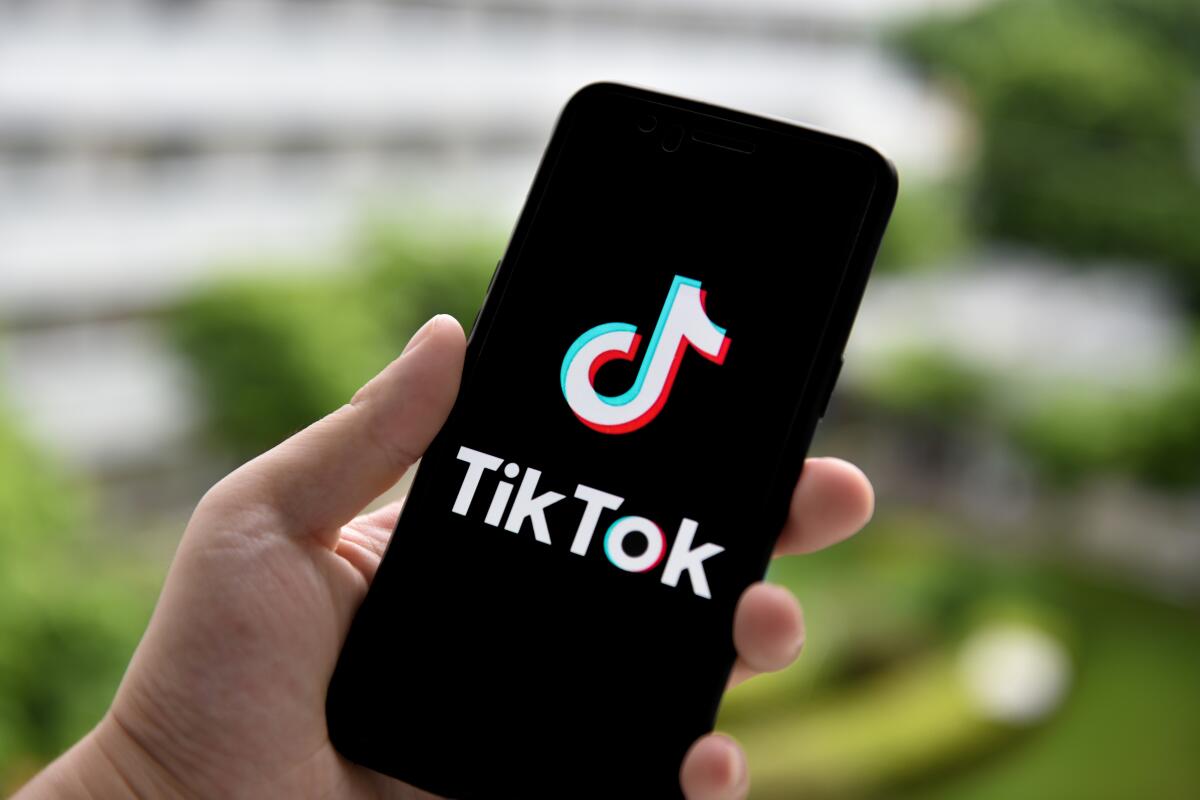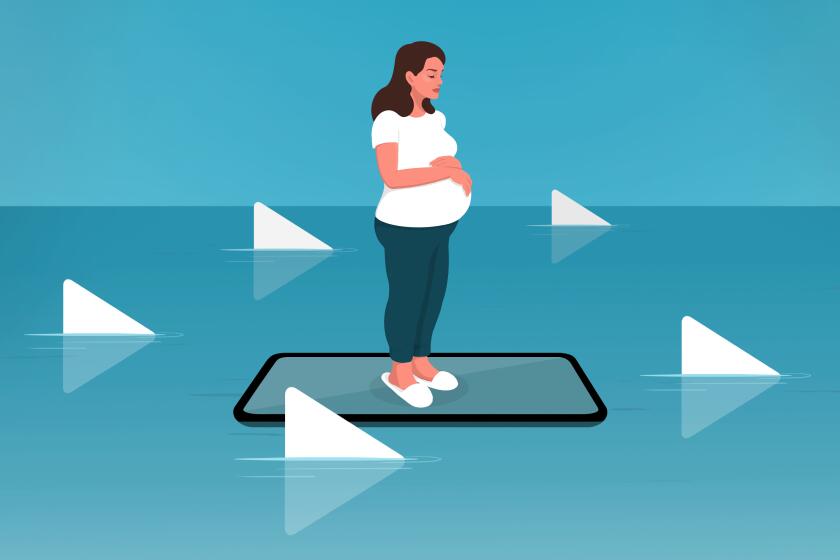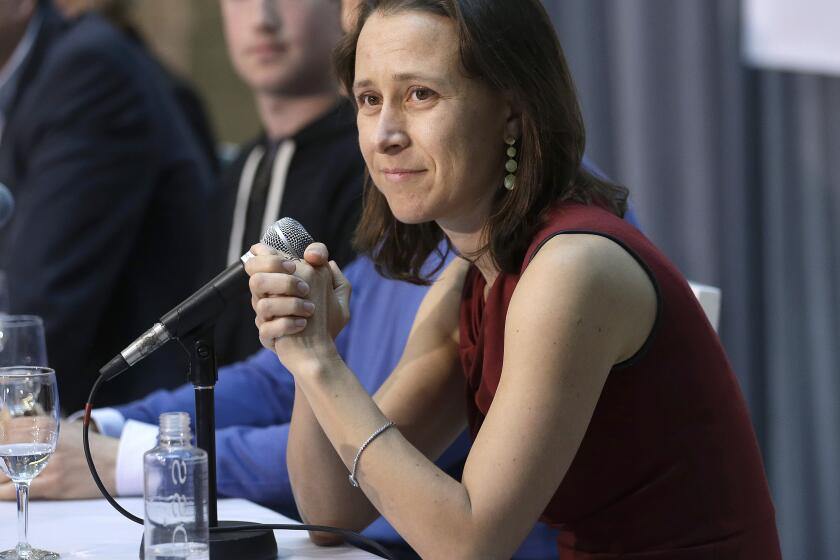Op-Ed: What happens when TikTok is your main source of news and information

- Share via
On TikTok you’re liable to find restaurant recommendations, lip-syncing snippets and false claims stating that COVID-19 vaccines contain aborted fetal tissue and that crisis actors faked the Uvalde school shooting. TikTok, along with Instagram, is where Gen Z searches for information and entertainment. They often come up with a blurry mix between fact and fiction.
The internet is how Gen Z becomes informed — and too often misinformed — about the world. Nearly 40% of this generation, young people born between the late 1990s and early 2000s, prefers using TikTok and Instagram as their search engines, according to recently released internal data from Google.
These platforms showcase short videos, which is great for a new dance move or a fun meme. But they can be just as effective in spreading videos conveying misinformation and conspiracy theories. Just because Gen Z grew up with social media doesn’t mean they know how to evaluate the information they find there.
California Atty. Gen. Rob Bonta has announced that he and a coalition of his counterparts are pursuing an investigation into how TikTok affects young people.
Our educational system has been slow to respond, often providing students with dated strategies for determining online credibility such as dwelling on a website’s “About” page or checking to see when the information was published or posted. Analog strategies like these are the equivalent of teaching 16-year-olds to drive a Tesla by giving them a manual for a horse-drawn carriage. Education must meet students where they’re at. Like it or not, that address is now on social media.
After we administered a 2016 survey with colleagues at the Stanford History Education Group, we summarized students’ ability to separate digital fact from fiction in one word: “bleak.” In the intervening years, fake news and misinformation have dominated the national conversation. But awareness alone doesn’t solve the problem.
In a 2021 follow-up, our research group surveyed over 3,000 Gen Zers, asking them to evaluate a grainy video that claimed to provide evidence of U.S. voter fraud. The video was actually shot in Russia. Students could find this out by searching online for the words “Democrat 2016 voter fraud video,” which quickly brings up links to Snopes and the BBC debunking the claim. Yet the majority of those surveyed were duped, concluding that the video constituted “strong evidence” of American election tampering.
We can’t rely on social media platforms to solve the problem of misinformation — they can’t even be trusted to police themselves. Analysis by the Institute for Strategic Dialogue found that 58% of TikTok videos relating to COVID vaccines lacked warning banners, despite the company’s commitment to flag vaccine-related content. Poor information always seems to find a way to slither through platform safeguards.
Media literacy that will empower younger generations needs to be more than an appendage to today’s school curricula. The California State Department of Education’s Civic Engagement Roadmap, for example, nods to “media literacy” as one of 10 “promising practices,” alongside “performance assessments” and “service learning,” to prepare Gen Z to become “agents of positive change.”
The implementation of guidelines like these, however, is left to the discretion of individual teachers who, already overworked, often pass the responsibility on to others or dispense with it in a lesson or two. Teaching students to discern reliable information from inaccuracies or outright lies is too important to be left to individual discretion. In an information age, digital literacy should be the foundation to practically everything schools teach.
We can’t stop Gen Z from relying on social media for information. Nor can we kid ourselves that a presentation by a teacher or the school librarian matches the scale of the misinformation challenge. If we want to reach today’s youth, we must use the tools they can relate to — including TikTok videos — to teach the content we deem important. While doing so, we can sharpen students’ ability to identify misinformation.
Math classes, for example, could be retooled to help students understand how algorithms curate the content they see on social media platforms. Teachers can make clear how TikTok and Instagram’s algorithms sacrifice credibility in order to keep users’ eyeballs glued to the screen.
On TikTok and Instagram, pregnant women find themselves targeted with videos that prey on their worst fears as expectant mothers, from birth defects to child loss. For some, quitting social media is the only solution.
Economics courses can help students understand the platforms’ business models in our “attention economy,” and how profit motives align with the promotion of viral misinformation.
English courses could illustrate how small variations in search terms generate different results. Search “vaccines” on TikTok and you’ll be directed to information from the World Health Organization. Try “vaccines heavy metals” and you’ll find a slew of videos spouting spurious claims.
The transformation of the curriculum must include all areas of study. It’s already happening in Illinois, where some innovative teachers are integrating digital literacy into core school subjects.
Today’s young people spend seven to eight hours a day online, somewhere around 3,000 hours a year. The challenge of identifying online misinformation will not be solved with any single strategy. It will take a curriculum overhaul to truly help Gen Z distinguish fact from fiction on the platforms where they spend their time.
Sam Wineburg is a professor of education at Stanford University and founder of the Stanford History Education Group, where Nadav Ziv is a research associate.
More to Read
A cure for the common opinion
Get thought-provoking perspectives with our weekly newsletter.
You may occasionally receive promotional content from the Los Angeles Times.












